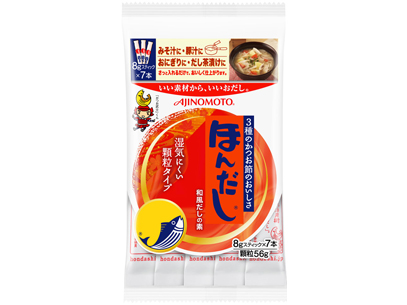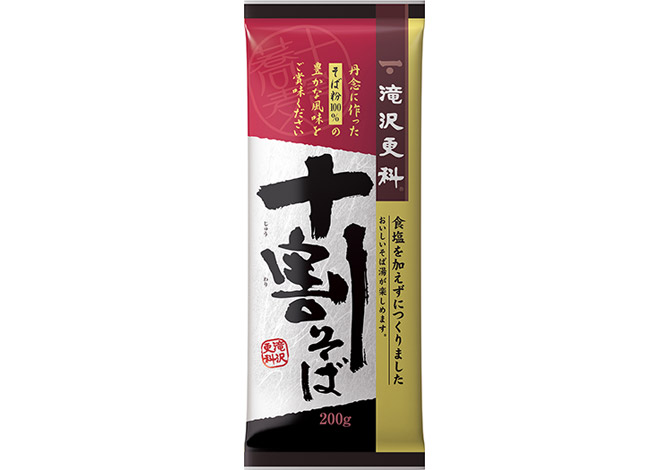Yummy's Guide to Japan
Mar 24, 2023
Meiji Jingu
Jan 15, 2023
5 easy Japanese food recipes
If you have already read my article Shopping at Japanese Supermarkets: Dashi, Udon/Soba Noodles, Shoyu, you probably know what to buy when you want to cook Japanese food. But how to cook Japanese food? Here are 5 simple menus.
1. Hot Udon (or Soba) in Dashi Soup
- Dry Udon (or Soba) noodle serving for 1 person
- 1 pack or Udon Dashi Soup or 100ml or Mentsuyu
- Hot water for the Soup (Amount depends on which product of Udon Dashi soup you buy, but if you use "Higashimaru" you use 250ml, and if you use "Yamaki Mentsuyu" you use 300ml.)
- Whatever toppings you want (ex. Chopped green onion, Katsuo Bushi, Sesame seeds, Grated ginger, etc.)
Directions:
- Boil Udon (or Soba) noodles as long as specified in the noodle package.
- Prepare the soup by pouring hot water together with the Udon Dashi powder or Mentsuyu in your bowl for eating.
- After boiling the Udon, and placing whatever toppings you want, serve in the bowl.
2. Basic Miso Soup
- 1 pack of Udon Dashi Soup or Dashi powder
- 300ml water
- 1 pack of Tofu
- Whatever ingredients you like (ex. Green Onion, Dry Wakame, etc.)
Directions:
- Boil 300ml of water together with Udon Dashi Soup or Dashi powder in a pot.
- After it comes to a boil, add dice-cut size Tofu or whatever ingredients you want to enjoy in your Miso Soup.
- Stop the heat, add 1 tablespoon of Miso, and slowly stir in the pot to make sure the miso dissolves in your soup.
- Serve the Miso Soup in your bowl, top it off with chopped green onions.
- 2pcs of chicken
- 1 tablespoon of Sake
- 2 tablespoons of Mentsuyu
- 2 teaspoons of grated ginger (if you do not have a grater nor any fresh ginger, you can just use ginger powder or finely chopped ginger)
- 1 tablespoon of vinegar
- 1/2 tablespoon of sugar
- Grill your chicken in you pan, from the skin side until skin is crisp, at least for 5 minutes.
- Reverse your chicken to the other side, pour the sake, and cover with a lid (or aluminum sheet if you don't have a lid), and leave for 3 minutes so that the steam fully cooks the inside of your chicken.
- Pour the rest of the ingredients (Mentsuyu, ginger, vinegar, sugar) in to the pan, and keep stirring until the teriyaki sauce thickens, for about 5 minutes.
- Once the sauce thickens and evenly covers the chicken, take it out of the pan and you are ready to serve. (You can serve it after cutting the chicken, or cut it by yourself in your dish by using a fork and a knife.)
4. Pot of Pork and Chinese cabbage
Ingredients (to serve 4 people):
- 300g of thinly sliced pork
- 1/2 block of Chinese cabbage (around 1000g)
- 2 tablespoons of "Hondashi"
- 1800ml of water
- 2 tablespoons of shoyu
- 1/2 teaspoon of salt
- Thinly sliced strips of 1 Japanese leek
- Chopped green onions (as much as you like)
- 1/4 pcs of ginger, thinly chopped in strips
Directions:
- Peel one leaf of Chinese cabbage and place one slice of pork, place another leaf of Chinese baggage and one slice of pork, and repeat until you have 4~5 layers. Cut in to 5cm width and place each slice of the cut in your cooking pot and repeat until your cooking pot is full.
- Sprinkle the "Hondashi" evenly to the pot, pour water, shoyu, salt, and heat until it comes to a boil. Once it boils, cover the pot with a lid, and simmer until the inside is evenly cooked.
- Once it is evenly cooked, top with japanese leek, chopped green onions, and ginger, and you are ready to serve.
- 100g of thinly sliced pork
- 1 tablespoon of Shoyu
- 1 tablespoon of water
- 2 teaspoons of sugar
- 1/4 teaspoon (around 1g) of "Hondashi"
- 1 teaspoon of oil (whatever choice of oil you usually use for cooking is okay, but I personally like the sesame oil for aroma)
- Mix shoyu, water, sugar, Hondashi together.
- Spread the liquid of 1 on top of the slices of pork.
- Heat the pan with oil, and spread the slices of pork to the pan.
- Grill the pork by moving it once in a while, and once it is browned, turn it to the reverse side. If there is plenty of sauce in the pan, heat it on one side of the pan, to make the sauce a little thicker.
- Once both sides of the pork browns, place it to your dish, pour the sauce on top, and serve.
Jan 3, 2023
Shopping at Japanese Supermarkets: Dashi, Udon/Soba Noodles, Shoyu
It's always exciting for me to visit supermarkets during my trip overseas, and I think it's pretty much similar for travelers in Japan too. So, if you have no idea what to buy, but want to buy some food "Japanese", here are some ingredients you may be interested in.
1. Dashi
You might probably be familiar with the word "Umami" by now. It could be described as one of the 5 basic tastes, or something like the savoriness. Although the scientific facts are very complex, what is for sure, is that these umami are included in meats, fish, vegetables, fermented products, and so on, and the umami is what makes the Japanese food so unique. By making the broth or "Dashi" using these ingredients, you can create some Umami in your dish, but it is a bit difficult to make your own Dashi, if you are just a beginner, and especially if you are unable to frequently purchase Japanese ingredients. But the good news is that you can easily purchase these Dashi products in Japanese supermarkets.
Some examples of Dashi products:
- ヒガシマルうどんスープ (Higashimaru Udon Soup): Dashi for Udon Soup, but can also be used for other purposes too.
- ほんだし (Hondashi): Basic Dashi for various uses, such as Miso soup, "Nimono" (simmered dish).
- めんつゆ (Mentsuyu): Its original purpose is a rich sauce for noodles such as Soba or Udon, but can also be used for other dishes when diluted with water.
2. Udon/ Soba
Udon and Soba are Japanese noodles, which are basically eaten with the dashi soup, or some thicker flavored mentsuyu. Udon is made of wheat flour and Soba is made of buckwheat flour. Although the precise cooking directions differ according to each Udon or Soba noodle brand, it's basically similar to cooking pasta. You boil hot water in a pan, put in the Udon or Soba noodles, wait until it's cooked, remove the noodles from the hot water, and serve it in a warm style together with your dashi soup, or serve it in a cold style after washing the noodles in cold water and remove the water drops in a strainer with your cold mentsuyu noodle dip. I would recommend to buy the Udon/ Soba noodles because you can buy dry noodles which are rather light, cheap, easy to buy anywhere, and cooking these dishes are simple with the least necessary ingredients (Udon/Soba noodles + Dashi).
Some examples of Udon/Soba products:
- 稲庭うどん (Inaniwa Udon)
- 五島手延うどん (Goto Tenobe Udon)
- うどん県のうどん (Udon Ken no Udon)
- おびなた 十割そば (Obinata brand "Ju-wari" Soba)
- 滝沢更科 十割そば (Takizawa Sarashina brand "Ju-wari" Soba)
- 山本かじの 十割そば (Yamamoto Kajino brand "Ju-wari" Soba)
3. Shoyu
Shoyu can be used for anything, and it would probably make a lot things have that Japanese flavor. Shoyu is mainly used for various Japanese dishes, but if you don't cook that much Japanese food so frequently, you would probably be most familiar by using Shoyu together with Sashimi (thinly sliced raw fishes and seafood).Dec 13, 2022
Domo
"どうも (Domo)" has several meanings.
- Hi/ Hello/ Hey
- Thank you
- Somehow
If you use it without combining with other words and just say "どうも (Domo)", it usually means Hi/ Hello/ Hey and is a casual greeting between close friends. If you use it after someone does something for you, or when talking about something nice someone did for you, it's a short form of expressing your appreciation. (Kind of like the abbreviated version of "Domo Arigato Gozaimasu".)
However, when you use it in within a sentence, it usually has this nuance of "somehow~" or "I'm not sure but~" or "it seems to be~", which shows the situation of something which is vague and not so clear.
It's a little bit difficult to use "どうも (Domo)" in a sentence, so if you are a beginner of the Japanese language, I recommend for you to just use "どうも (Domo)" to a new Japanese friend when you want to greet him/her to simply say "Hi!".
Dec 12, 2022
Sumimasen/Suimasen
The origin of the word comes from the word "済む (Sumu)" meaning end/ finish/ complete. The word "済む (Sumu)" also includes interpretations such as "it's solved", "~ is satisfied". This meaning changes when it is the negative form "~ません (~masen)" is added to the end of the word, and turns into "済みません (Sumimasen)", which the exact translation now means "can not be solved" or "can not be satisfied".
Because the pronunciation of "すみません (Sumimasen)" gradually changed, it is pretty common for people to also use "すいません (Suimasen)" too.
"すみません (Sumimasen)" and "すいません (Suimasen)" are used in various situations to express the following in a casual manner:
- I'm sorry
- Excuse me
- Sorry to cause you trouble
- Thank you
It's very useful because you can use it in various situations, and it makes you sound very Japanese by using this word, but please be careful, because it's basically a casual way of expression.
- When you bumped into someone on the train and want to apologize very casually.
- When you got lost in the streets and want to stop someone to ask for the direction to the nearest train station.
- When you want to call the waitress to request for the beverage menu.
- When you are trying on the size M clothing but it's too big for you, and the shop clerk brought the S size for you.
If you want to sincerely apologize or show your gratitude in a bigger way, it is better to use expressions such as "申し訳ございません(I apologize)" or "ありがとうございます(Arigato gozaimasu)".
Dec 2, 2022
Really Convenient Convenience Stores "Konbini” in Japan
- What is "コンビニ (Konbini)"? Japanese abbreviated form of "Convenience Store".
- Which are some of the major "コンビニ (Konbini)" chains in Japan?
7-ELEVEN https://www.sej.co.jp/in/en.html
LAWSON https://www.lawson.jp/en/
Family Mart https://www.family.co.jp/english.html
Mini Stop https://www.ministop.co.jp/english/
NewDays https://retail.jr-cross.co.jp/en/newdays/
Daily Yamazaki https://www.daily-yamazaki.jp/index.html *No English HP
- "Sopo" Cosmetics: Eye shadows, mascaras, etc., in trendy colors and mini sizes.
- Socks: Comfy good quality socks available in both basic and eye catching colors.
- "Fami Chiki" Fried chicken: Popular for its juicy meat and crispiness.
- "Karaage kun" Japanese style fried chicken: Popular not only for its taste but also the mini size.
- Soft Serve Ice Cream: Mini Stop is famous for the sweets, but I think it's the soft serve ice cream that made them famous.
- "Halo-Halo” dessert: The name "halo-halo" comes from the Philippines, which means "mixed up" in Tagalog. It's a mixture of soft serve ice cream, fruits, jelly, nata de coco, and shaved ice. It's only sold during the spring and summertime, so be sure to stop by when you're looking for a cold refreshing dessert in your trip during the warm/hot seasons.
Dec 1, 2022
"Reiwa"? What is the "Gengo" year?
- What is "元号 (Gengo)"? Japanese era name, used to describe the year.
- What is the origin of using "元号 (Gengo)"? Japanese Diplomats in ancient days introduced this culture of "counting the era" after visiting China.
- What is the "元号 (Gengo)" now? It is now "令和 (Reiwa)", the era which started since May 2019.
- When does this "元号 (Gengo)" change? It changes each time a new emperor reigns, and continues as Year 1, 2, 3 ... and onwards until the emperor changes.
- Who decides the "元号 (Gengo)" name of each era? The Japanese cabinet.
- How is this "元号 (Gengo)" used? For Japanese governmental related documents, calendars, and especially in New Year greeting cards.
- What is the meaning of "令和 (Reiwa)"? "Cultures are born and grow, when people beautifully bring their hearts
together."
The current "元号 (Gengo)" is "令和 (Reiwa)" which started from May 1st 2019, at the same time Prince Naruhito of the royal family had been appointed as the new emperor of Japan. 2019 was the 1st year of "令和 (Reiwa)", so if you are to describe the year 2023, you would say "令和5年 (Year 5 of Reiwa) ".
The "元号 (Gengo)" is used often in official governmental documents, so when you see some posters made by the Japanese government, you will often see "令和5年" instead of "2023". For example, when the Japanese have to submit official documents to the city hall, upon moving, marriage, tax payments, etc., the citizens always will have to write the year in "元号 (Gengo)" style. The "元号 (Gengo)" is also used very frequently upon celebrating of the new year, especially in greeting cards, also called "年賀状 (Nengajo)". If you are to send a New Year's greeting card to your Japanese friend, you will sound very familiar to Japanese cultures by writing the latest "元号 (Gengo)" of the new year!
Jan 4, 2016
Traditions to Preserve the Nature: Yukizuri
However in Tokyo, it is very rare to see any heavy snows even during the wintertime. Therefore, it is said that Yukizuri in Tokyo is done for creating a beautiful, winter-like view.
Jan 3, 2016
Traditions to Preserve the Nature: Komo Maki
When you visit Japanese gardens in the wintertime, you may find that there are some pine trees with straw mat wrapped around.
These straw mats are called "Komo Maki", which means "(Straw) Mat Wrap". Because they are only seen during the wintertime, it may seem like they exist to protect the trees from the cold winter weather. However, the role of the Komo is not for protection against the cold weather, but is actually used for protection against insects.When the weather turns cold, many insects which used to live in the branches will try to hibernate in the ground by passing the trunk of the tree. The upper part of the Komo is tied loosely, while the lower part is tied tightly, so that the insects can be trapped inside the Komo and spend the wintertime here. When spring comes, the Komo is removed from the tree and burnt together with the insects.
Jan 2, 2016
"Houyou Jyutsu" (Falconry) Event in Hama-rikyu Gardens

However, there was a meaning to this, which was to get the hawks used to the environment they are in. Hawks, supposedly, are very naive, sensitive animals which may get intimidated easily. Supposedly, the trainers have to make sure not take their hats off in front of the hawks, in order to not scare them.
After they finished walking in circles, it was announced that one group of 1 hawk and 2 trainers will leave the park, to head to the Dentsu Building nearby, to prepare for the main event of the exhibition: the hawk will fly from the top of the building, to the park!

While we were waiting for that group to head over to the building, we watched some small shows. For a hawk to fly from the instructors hand to the tree nearby, for a hawk to fly to an audience's hand to another audience's hand. By the way, there is a cultural saying in Japan, that it is good luck to see a hawk in the first dream of the new year. Although this exhibition is not technically a dream, many audience gathered to see this "lucky exhibition" featuring the hawk.
After several small shows went on, the group which left for the Dentsu Building was ready. After several counts, amazingly, the hawk was able to fly towards the park from such a far distance.

However, maybe because there were many black crows challenging the hawk to a turf war in the air, the hawk was not able to fly immediately to the nearest tree, and it kept flying to other trees.

Finally, after several tries, the hawk was able to fly back to the trainer, and the show ended.

Although it is not the season for major flowers to bloom, there were still some flowers to enjoy.



Also a nice cup of matcha to enjoy in the relaxing tea house.

-
When you visit Japanese gardens in the wintertime, you may find that there are some pine trees with straw mat wrapped around. These straw ma...
-
What is " コンビニ (Konbini)"? Japanese abbreviated form of "Convenience Store". Which are some of the major " コンビニ ...
-
It's always exciting for me to visit supermarkets during my trip overseas, and I think it's pretty much similar for travelers in Jap...





















